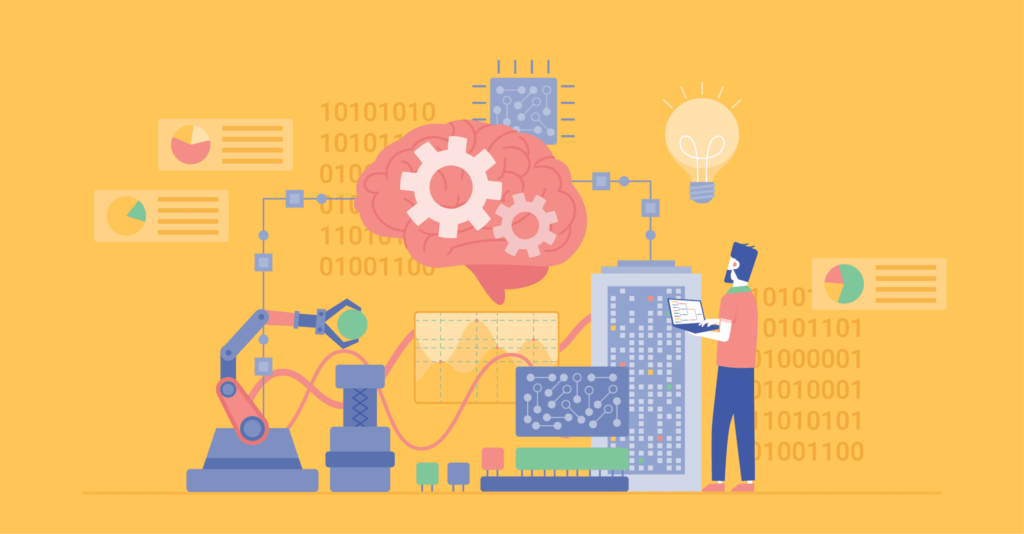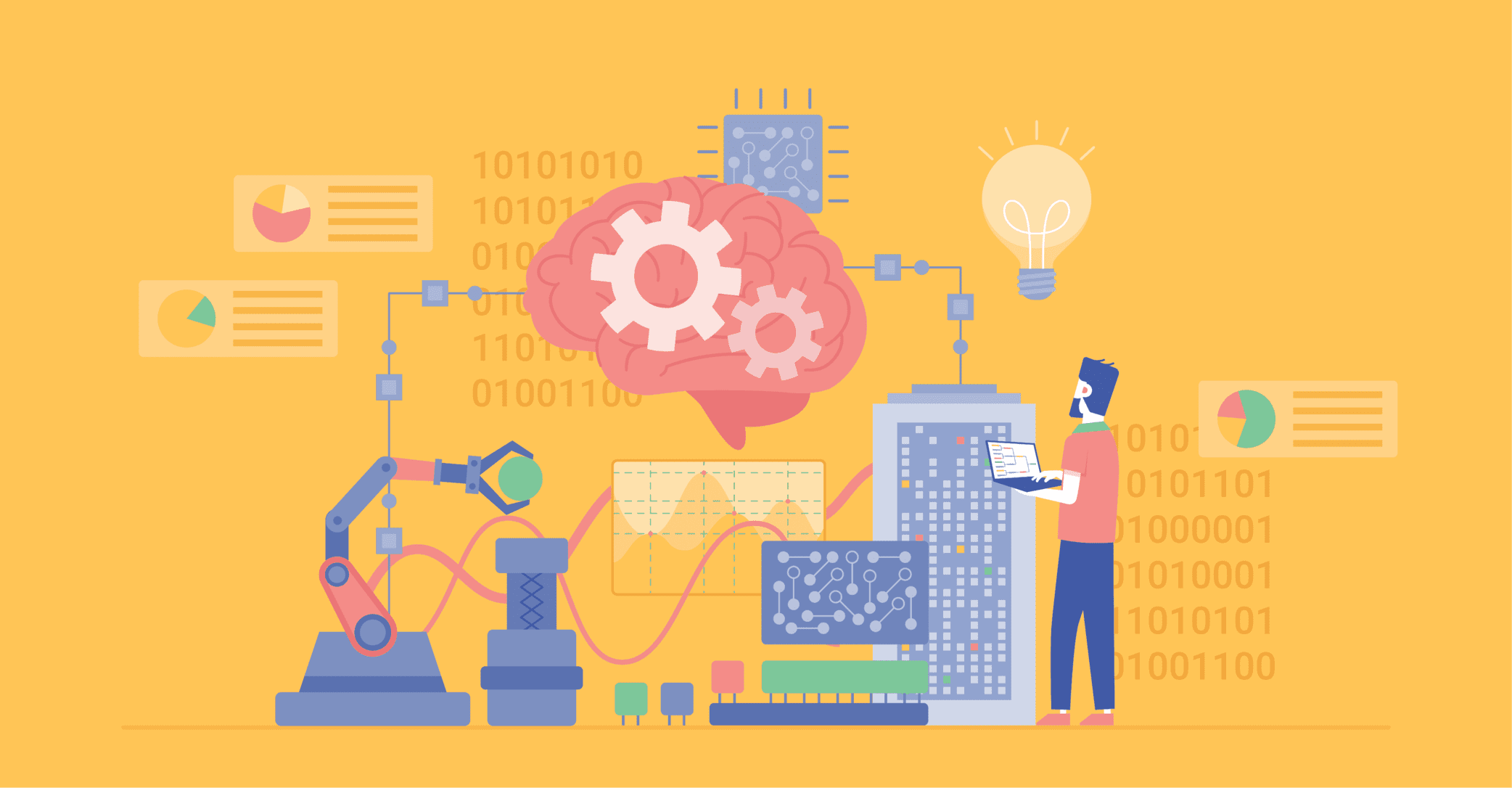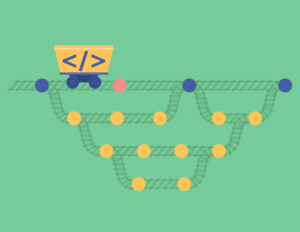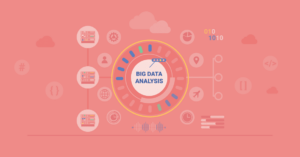Machine learning, once considered the exclusive domain of programmers and mathematicians, has become ubiquitous in the modern world, with applications in nearly every industry. While some barriers for wider adoption may still exist, there are plenty of specialists available to provide consultation or implementation, making it more accessible than ever before. In fact, with the immense potential for improved decision-making, enhanced productivity and predictive accuracy, failing to embrace machine learning today could be disastrous for individuals and businesses. In this article, we’ll explore some of the most practical applications of machine learning algorithms and the ways in which they are transforming the world around us.
What is Machine Learning?
But first, if you’re out of the loop, a quick explanation: machine learning (ML) is a subfield of artificial intelligence (AI) that enables computers to automatically improve their performance by learning from data without being explicitly programmed. ML has rapidly become one of the most important technologies in the world. Its applications are widespread and manifold — from detecting fraud to predicting disease outbreaks — and are rapidly taking over every industry.

Types of Machine Learning
There are three main types of machine learning today:
Supervised learning
In supervised learning, the machine is trained using labelled data, which means every example in the training data is associated with a label or output. Let’s say you have a dataset of labelled images of a variety of fruits like apples, bananas and oranges. The computer algorithm is trained with this dataset by being shown a vast amount of images along with their corresponding fruit names. Once the algorithm has learned to identify each fruit, you can then give it a new, unseen image of a fruit and it will be able to predict its name. Beyond image and speech recognition, supervised learning can be used in business for:
- Credit scoring and risk assessment
- Fraud detection and prevention
- Recommendation systems
- Sentiment analysis and customer service chatbots
This approach was beautifully animated some time ago by CGP Grey in their YouTube video titled “How AIs, like ChatGPT, Learn.”.
Unsupervised learning
In unsupervised learning, on the other hand, the machine is trained using unlabelled data, which means the goal is to discover patterns or any structure within the data. To understand how unsupervised learning works, let’s refer to our previous example of a dataset containing fruit images, but do away with any names or labels. In this way, the computer algorithm has to identify patterns or similarities among the fruits without any guidance. It might conclude that some fruits have similar shapes or colours, while others have wildly dissimilar properties. Beyond pattern recognition and image analysis, unsupervised learning can be applied in business in the following ways:
- Anomaly and fraud detection
- Clustering and segmentation of customers
- Topic modelling and text mining
- Data compression and dimensionality reduction
Reinforcement learning
In reinforcement learning, the machine learns by interacting with an environment and receiving feedback as rewards or penalties. Imagine you have a video game in which a player has to navigate through various levels, avoiding obstacles and enemies to reach a goal. In reinforcement learning, the computer algorithm is the player, while the game would be the environment. The algorithm learns to play the game by taking actions, like moving the character or shooting enemies, and receives feedback on how well it’s doing, such as gaining points for defeating enemies or losing health after getting hit. The goal of reinforcement learning is to learn a policy that maximises the expected long-term reward. Typical use cases of reinforcement learning in business are:
- Supply chain management and logistics
- Decision-making in finance and economics
- Advertising and marketing optimisation
- Automation and robotics
It’s important to note that these types of machine learning are not mutually exclusive, as in reality, it is not unusual for applications to involve a combination of them all. For instance, a product recommendation system may use both supervised and unsupervised learning techniques to offer personalised recommendations for customers.
Types of Machine Learning Algorithms
There are several types of machine learning algorithms, each with its own strengths and weaknesses. Below are some of the most common examples, along with their business use cases:
Linear Regression
This ML algorithm is used for predicting continuous numerical outputs based on a set of input variables. Some business applications of linear regression include:
- Sales forecasting
- Predicting housing prices
- Predicting customer churn
Logistic Regression
This algorithm is used for predicting binary outputs, such as whether a customer will make a purchase or not. Business scenarios where this is useful include:
- Fraud detection
- Customer segmentation
- Credit scoring
Decision Trees
This ML algorithm is used to model decisions based on a set of input variables. A handful of ways that businesses are using it include:
- Product recommendation systems
- Customer service chatbots
- Credit risk analysis
Random Forests
This algorithm is an ensemble of decision trees that is able to model complex relationships between input variables. Some ways that businesses are using it include:
- Predictive maintenance
- Customer churn prediction
- Quality control in manufacturing
Support Vector Machines
This particular predictive model is used for classification and regression, especially for datasets with complex boundaries between classes. It is being employed by organisations in:
- Image classification
- Email filtering
- Predicting customer lifetime value
Neural Networks
Finally, neural networks — including advanced deep networks like the immensely popular LSTM — are used for modelling complex relationships between input variables and outputs, particularly for datasets with nonlinear relationships. This has found application in business for:
- Voice recognition
- Facial recognition
- Autonomous vehicles
Bear in mind that the choice of ML algorithm will depend on the nature of the problem, the size and quality of the data, and the available computational resources. Some problems may also call for a combination of algorithms to achieve the best possible results.
Companies Automating Decision Making
It is said that a marketer who makes decisions without turning to concrete data should immediately be shown the door. At the same time, while it’s important to rely on data-driven decisions, sometimes basic maths will not be sufficient to accurately predict future events. This is where machine learning algorithms are truly able to shine. They have proven to be remarkably effective at anticipating future outcomes, surpassing traditional methods such as calculating the averages of previous periods. With that in mind, there are many examples of companies that are utilising machine learning algorithms to make informed decisions based on their data. Some of these include:
Amazon
The e-commerce giant uses an ML-powered recommendation engine, which suggests products to customers based on browsing and purchase history. Amazon also utilises machine learning to optimise its delivery routes, prevent fraud and predict consumer demand.
Netflix
The streaming veteran employs ML algorithms to recommend films and programmes based primarily on user viewing history. It also uses machine learning to optimise its video encoding, reduce buffering and improve the overall quality of its service.
Uber
The ubiquitous tech company uses machine learning algorithms to optimise pricing, improve driver routing and predict rider demand. It also makes use of the technology to identify and prevent fraud and improve its customer service through an intelligent chatbot interface.
The search behemoth uses machine learning for a wide variety of applications, including search ranking, language translation, image and speech recognition. ML algorithms are also employed to power its popular advertising platform, which serves personalised ads to users based on browsing history and other data.
Procter&Gamble
The multinational corporation leverages machine learning to optimise its supply chain, improve marketing strategies and predict customer demand for its products. In addition, it utilises the technology to identify new opportunities for growth in both product innovation and development.
How Machine Learning Is Being Used in Various Industries
Machine Learning in Healthcare
One of the most practical applications of ML algorithms is in the healthcare sector. Machine learning can be used to analyse medical information, such as patient records and imaging data, to improve diagnosis and treatment outcomes. It can also be utilised to identify high-risk patients and develop targeted interventions that are able to prevent disease. For instance, machine learning has been used to develop algorithms that can predict the likelihood of a patient developing sepsis — a potentially fatal complication of infection — and initiate treatment before symptoms occur.
Machine learning in Finance
In line with the examples above, machine learning is also transforming the financial industry. By analysing large amounts of data, ML algorithms can identify suspicious patterns that could indicate fraudulent activity, including credit card fraud or insider trading. They can also be employed to predict market trends and inform investment decisions, leading to improved returns for investors. In addition, these algorithms are being used to provide more accurate and reliable credit scores, which may help individuals and businesses to access credit more easily.
Machine Learning in Transport
Another practical application of machine learning is in logistics and transportation. ML algorithms can be used here to optimise traffic flow and reduce congestion, as well as to develop autonomous vehicles that can navigate complex road networks. They can also analyse data from infrastructure and vehicle sensors to predict maintenance needs and prevent breakdowns. By improving the efficiency and safety of transportation, ML is helping to reduce emissions and enhance quality of life around the world.
Machine Learning in Customer Service
The field of customer service is also being totally transformed by machine learning algorithms. With the help of ML, companies can build chatbots and virtual assistants that provide customers with personalised support. These tools can help reduce wait times and improve customer satisfaction, while concurrently reducing the workload for human customer service representatives.
The Role of Machine Learning in Sustainability
Finally, machine learning is being used to not only improve energy efficiency, but reduce waste in a variety of industries. By analysing data from sensors and other sources, ML algorithms can spot anomalies that could help companies to optimise their processes and reduce their carbon footprint as a result. This can lead to significant cost savings in addition to environmental benefits.
Other Ways Machine Learning Can Help
Here are some other ways machine learning can be employed:
Assessing Employees
Machine learning algorithms have the ability to evaluate employee performance and even assign scores to individuals based on their impact within an organisation. By analysing document workflows to identify their key performers, companies can offer targeted assistance to drive better results and optimise their workforce.
Generating Quotes
ML algorithms can be trained on historical data to accurately predict future trends, including demand for products or services, changes in market conditions and variations in production costs. This data can then be repurposed to generate reliable quotes and estimates. This opens up new possibilities for areas such as Algorithmic trading.
Segmenting Customers
Machine learning can help companies segment their customers based on a number of important criteria, including purchase behaviour, demographics and preferences. By doing so, companies can gain valuable insights into their customers’ needs and tailor their marketing and sales strategies accordingly.
Optimising Costs
These algorithms can also help businesses optimise their costs by identifying areas for expense reduction without compromising on quality. For instance, they can be used to determine the most cost-effective suppliers — and consequently optimise the supply chain.
Increasing Employee Performance
Last but certainly not least, with the help of machine learning algorithms, computers can analyse and understand human language. This has led to the development of advanced chatbots like the groundbreaking ChatGPT. In fact, the public release of ChatGPT is already being hailed as a revolution, as the chatbot can write essays on complex topics and even pass university exams with ease. Just take a look at all the ways it can help, direct from the horse’s mouth:
- Conduct research and provide information on specific topics.
- Create to-do lists and manage tasks.
- Set reminders for important deadlines, tasks and events.
- Schedule and manage appointments and meetings.
- Respond to messages on behalf of the user.
- Provide access to documents and files.
- Automate repetitive tasks through integrations with software applications.
- Assist in managing and prioritising workflows.
- Streamline communication between team members.
- Provide insights and analytics on productivity and performance.
Conclusion
From daily business decisions to long-term planning, it is clear that machine learning algorithms can help individuals and companies improve their performance in a variety of game-changing ways. In fact, it is no longer accurate to say that only companies with vast amounts of data are able to benefit from machine learning algorithms. Nevertheless, while the practical applications of ML are undeniably diverse and far-reaching, its true impact is only beginning to be understood. By leveraging the power of data and artificial intelligence today, you can solve some of your company’s most pressing problems and stay ahead of the innovation curve.



